OddCameras.com
SKF-1 Stereo Attachment
The
SKF-1 Stereo Attachment was produced from 1985 until 2003 by the Fotopribor factory
in Cherkassy, Ukraine. There are still NOS (new old stock) items
around. The adapter was probably inspired by the Pentax stereo
attachment, a similar beam splitter device, available for different
Pentax lenses. The Pentax is a very close copy of the American
Stereo-Tach, once sold in the 40s by the Advertizing Display Inc.,
Covington, Kentucky. All these systems consist of a beam splitting
device to bring 2 stereo pictures on one 24x36 frame of a diapositive
film and a viewer attachment to covert the beam splitter into a viewer
device for stereoscopic diapositives.
The SKF-1 Stereo Adapter was made for a Helios 58mm lens on a Zenit SLR camera.
The
system used is different from other stereoscopic slide systems. As the
stereo pair sits side-by-side on one single frame, it has to be
optically separated to the usual visual distance via a mirror system.
And as the same optical procedure has alreday been applied for taking
the picture, you just have to turn around the attachment, add two
viewing lenses and put the slide on the other end, where the camera was
initially.
Dimensions: 120 x 55 x 50mm (W x H x L)
Weight: 223g
Some pictures:

NOS (new old stock), never used.
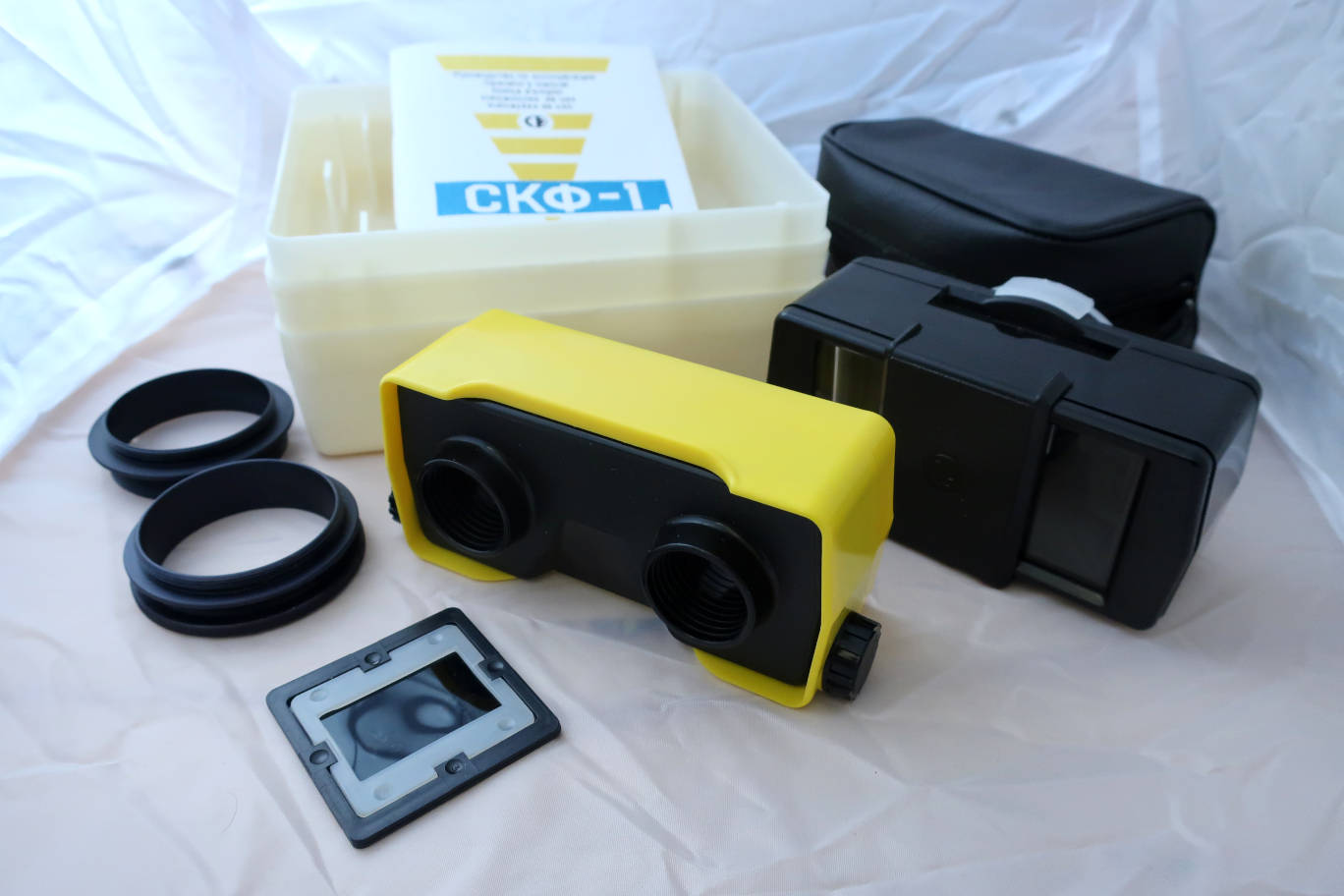
The
box, the beam splitter system with a diffuser on it and a pouch, the
viewer part, 2 adapter rings, a sample picture and instructions.
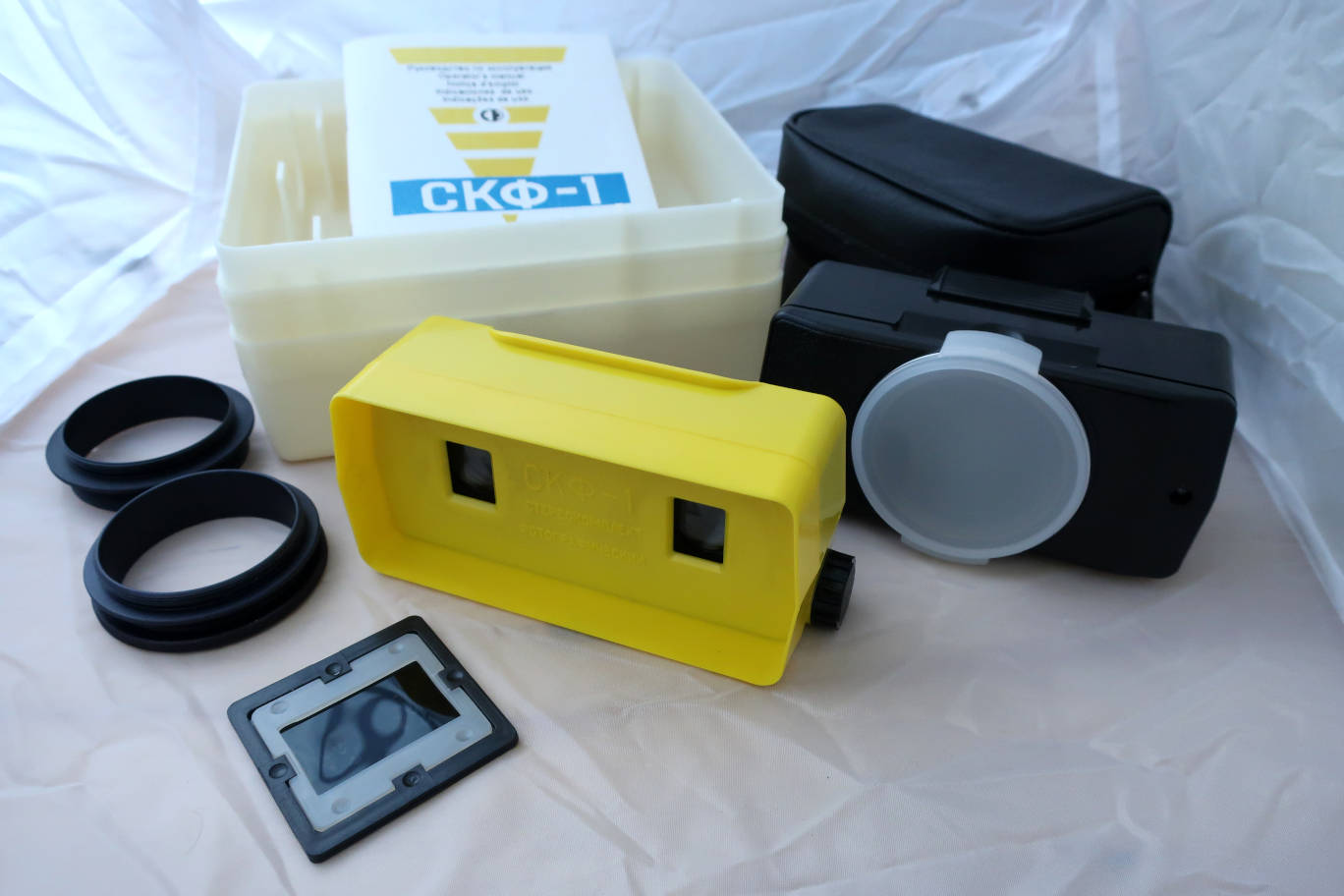
Same parts.
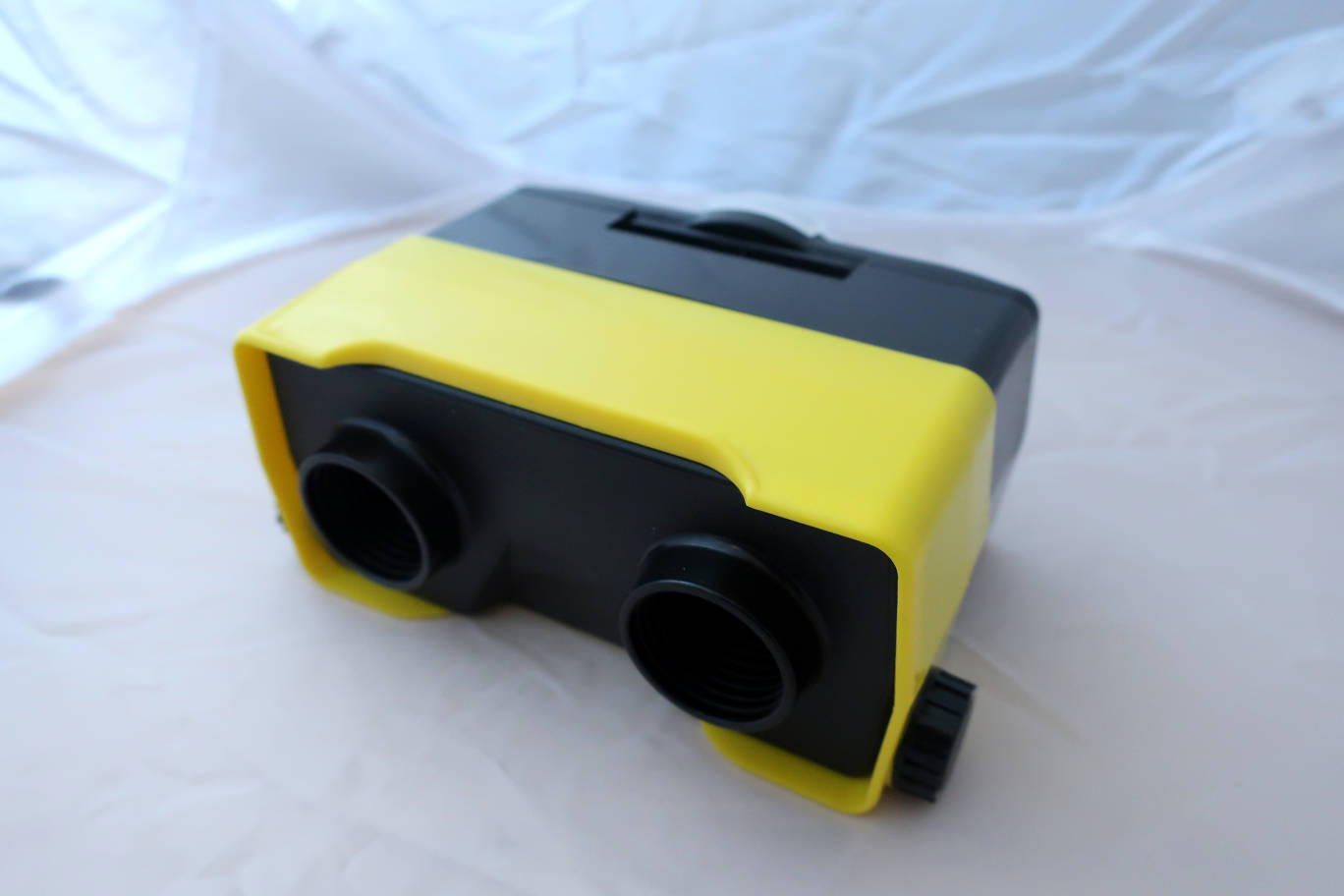
Mounted as viewer. There is a slit to put the slide and you need to install the diffuser.
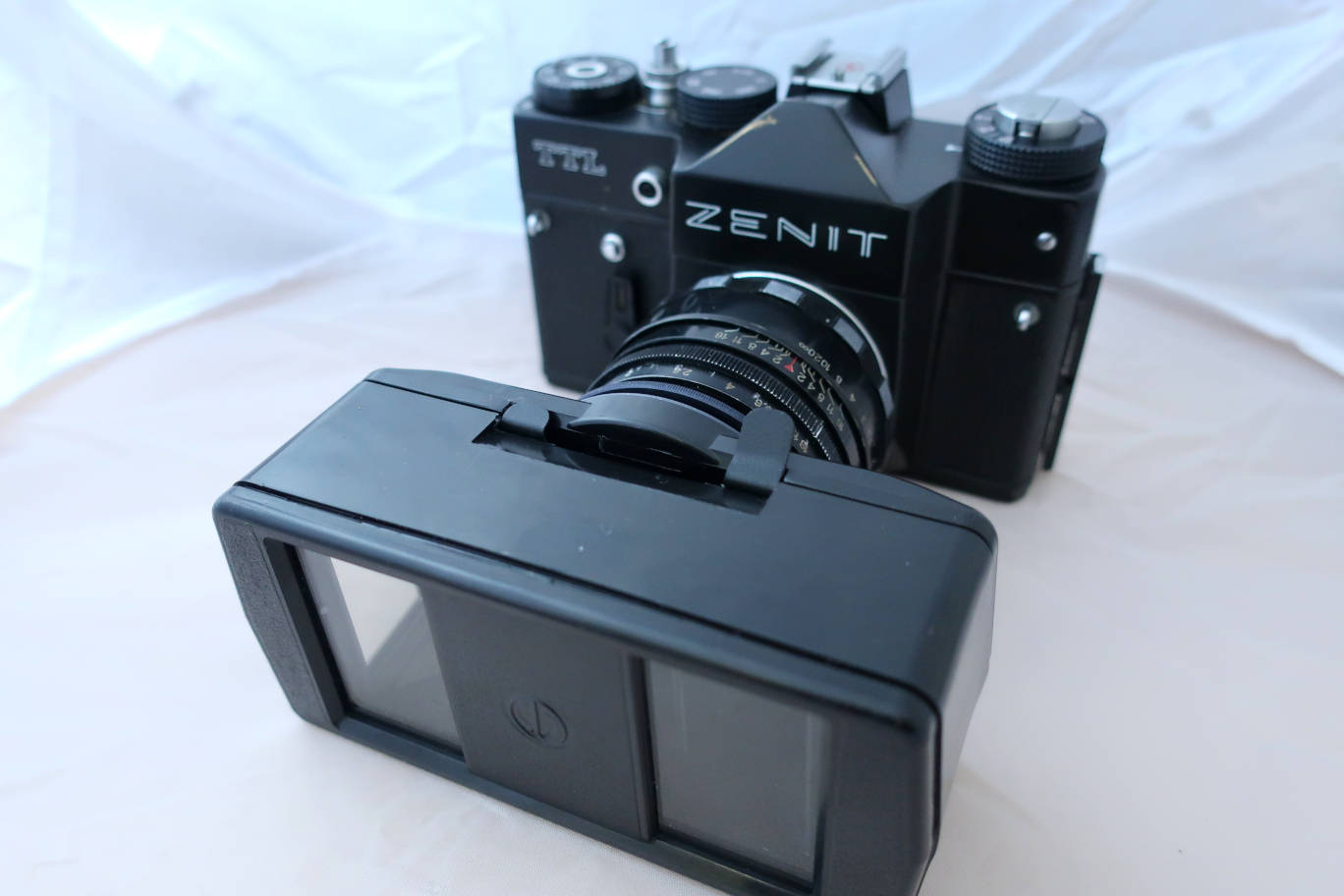
System mounted on a Zenit camera..

System mounted on a Sony A7. The black plastic part is needed for pictures at F2 and F2.8 aperture to separate the stereo pair.
The
beam splitter system is not easy to use at all. You have to attach it
to a 58mm Helios 44 lens via one of the screw adapters. There is a
counter-screw ring on the adapter ring which helps to align it
horizontally. It works best at F4 and F5.6. At F2 and F2.8 you will have to use the plastic attachment on the front to
to separate the 2 pictures of stereo pair, otherwise they mix into each
other. from F8 onwards a black line appears between the 2 pictures, in
grows at F11, F16 is unusable.
The Helios lenses I have are not the most contrasty ones. The system
brings a lot of flair and reduces contrast sensibly. It also absorbs a
lot of light. In the end I was left with dull images. I will try to
test in with other lenses later and see, whether it can be used like
the Loreo 3D system to produce paper prints.
The viewer system seems to be fine.
Two sample pictures, taken with a Sony A7 and the attachment (pictures OOC, only size scaled down):
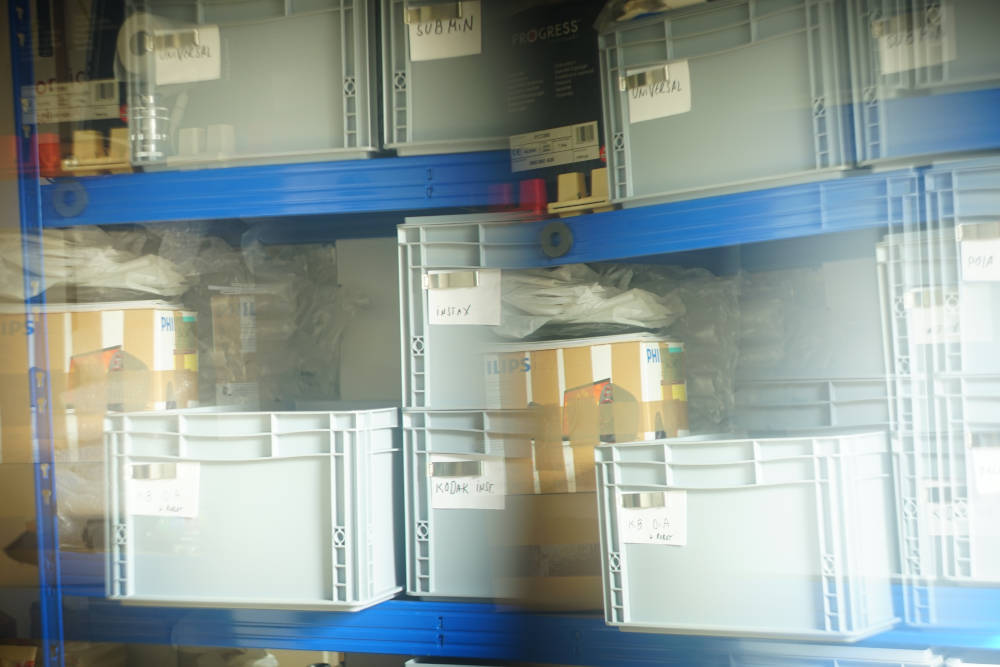
In my atelier, 2.5m, F2.8 without sepatator, hand held.
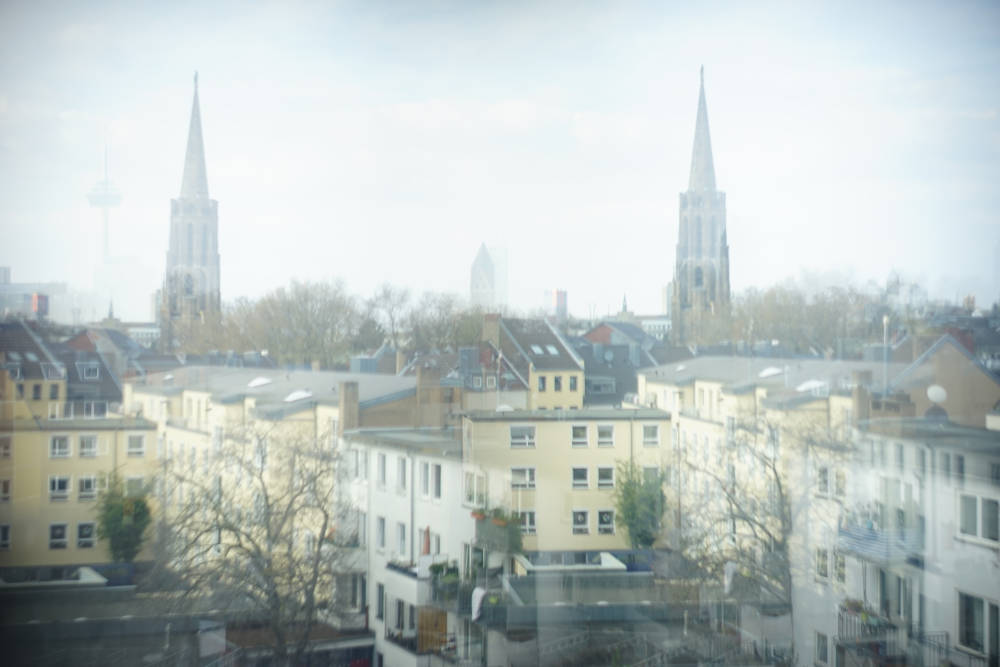
View from my Cologne atelier, gray day, infinity, F5.6.

The Helios lens without attachment. There is nothing wrong with the lens.